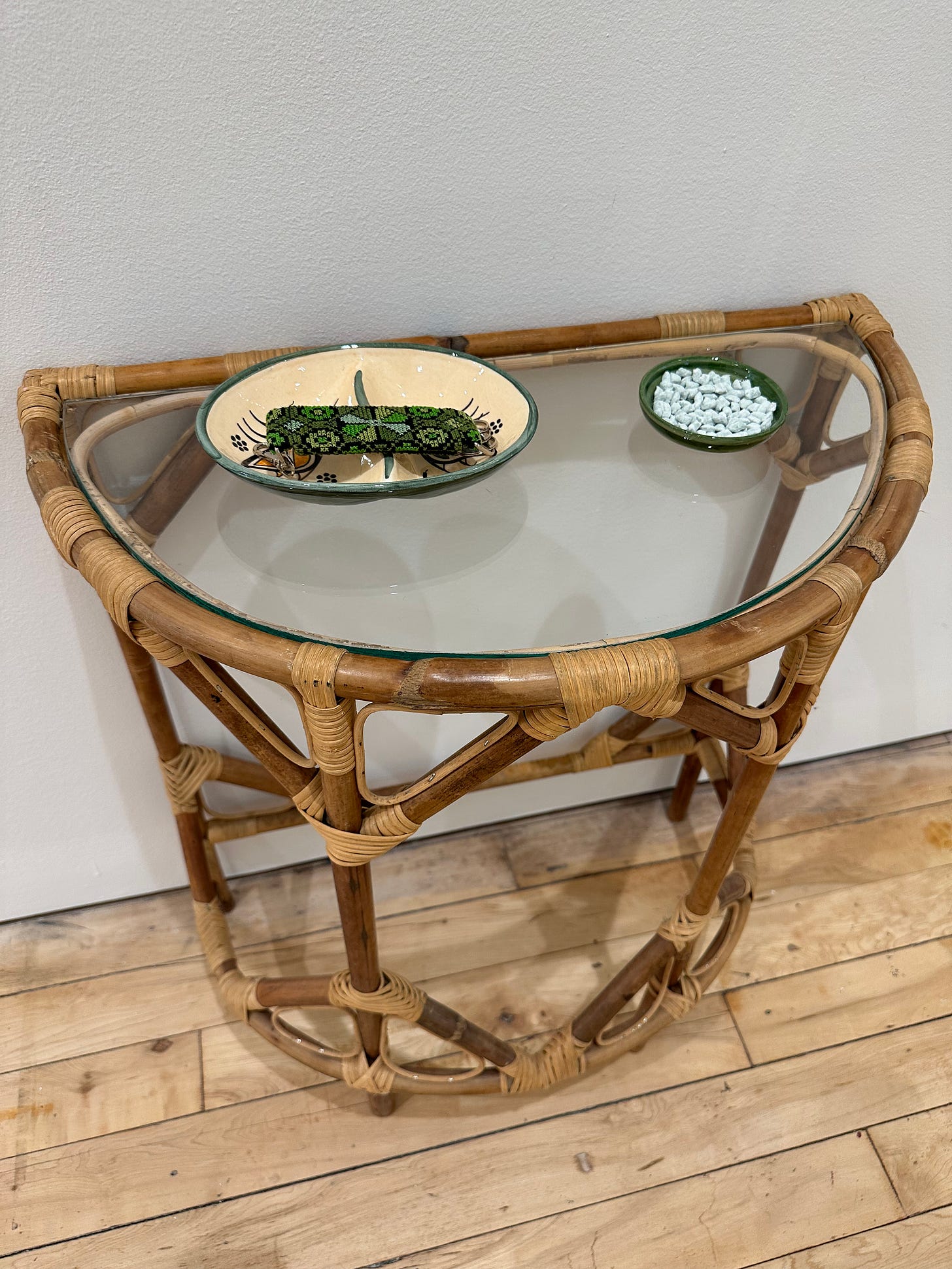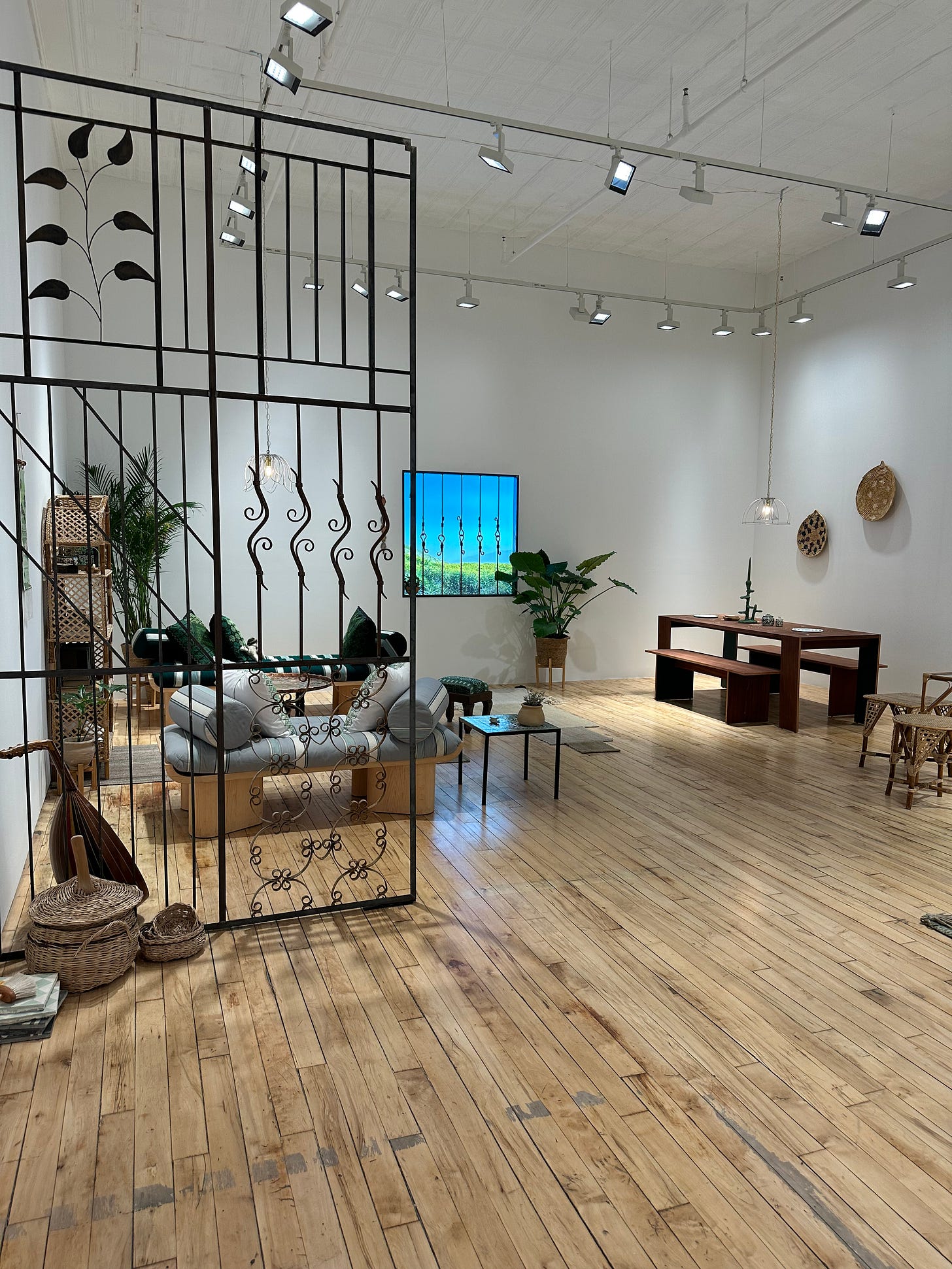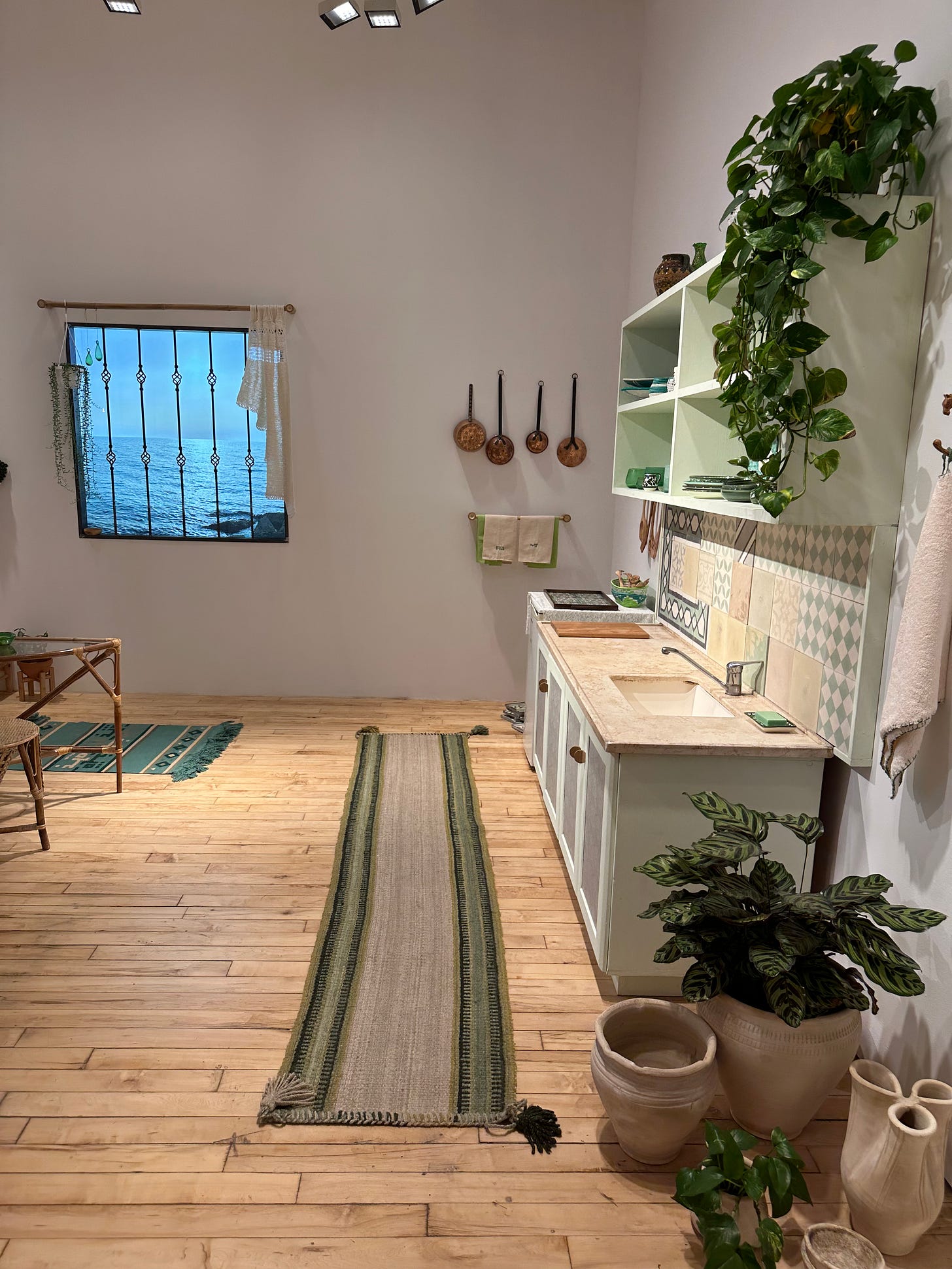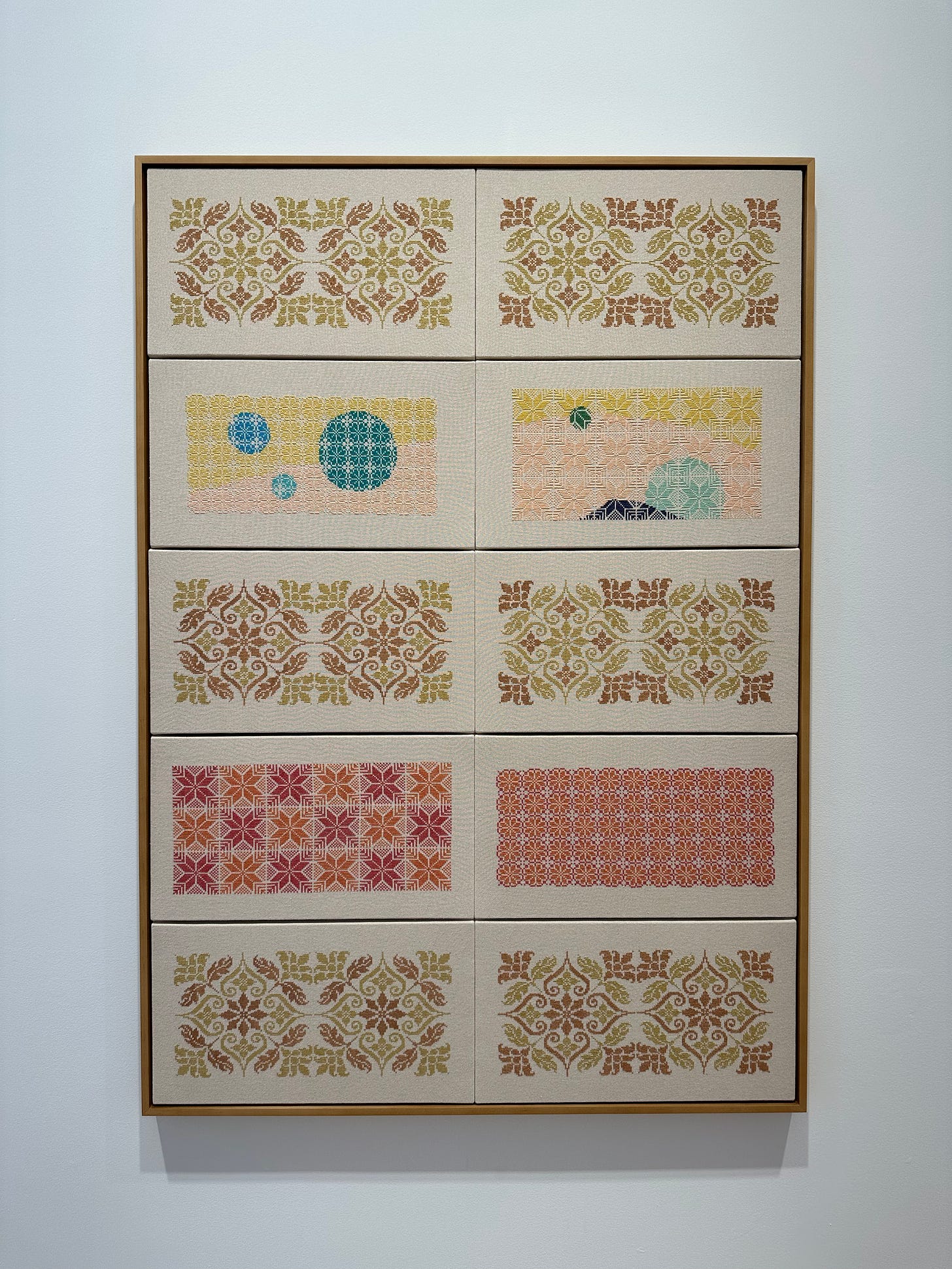Jordan Nassar: A Mountain Looms
As you enter, there’s a place on the side table to drop your keys. Above the side table is a painted tile, marking the residence with the name “Nassar”. The residence is open and attractively furnished, bespoke and humble. Leaf greens and natural accents predominate. On the far walls are two windows, framed with delicate iron bars, displaying unnaturally-lit lightboxes, one with a photo of a field and sky, the other of the sea.
For this show at James Cohan, Jordan Nassar creates a small home, imagining a place for him to return to in the Promised Land. Nassar is a Palestinian living in America, and like many of the diaspora, the idea of a return home is an insistent and elusive pull. Nassar wishes to imagine this idea in an artwork, The Sea Beneath Our Eyes (2019 - ongoing), envisioning a home to return to. He furnishes it with carefully-produced and hand-made items, the results of numerous collaborations between him and the craftspeople he discovers in Palestine and Israel.
On the other half of his gallery show at James Cohan, Nassar hangs his signature paneled textile wall works, shown below at the end. These are the kinds of works Nassar is known for, and would be familiar to those who have followed his career. The two halves of the show are linked by an attention to craft and a harmonious array of pattern and color. But with the imaginative construction of a promised home, Nassar enlarges his sphere of activity, while maintaining recognizable threads with his past work. The Sea Beneath Our Eyes productively elaborates on the yearning implicit in his older work. This connection enriches both sets of work.
I love when artists are able to pull this off. But extending one’s work while not going too far astray can be tricky. Felix Gonzalez-Torres once complained that artists were expected to create a new body of work with every show. (This was when a comfortable conceptualism was settling in the art world, and the emphasis on ideation expanded the palette of artistic action, as well as the expectations of the audience.) There was an excitement in anticipating a Gonzalez-Torres show. Each would build on what we knew of his work, extend his sphere of activity, while maintaining the core of an internalized dichotomy of pain and joy. Not all his works landed — sometimes the reach was too tenuous, or the work depended too greatly on an imagined generosity in the viewer.










